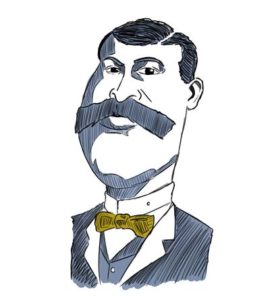From controversy to empowerment: the history of black dolls
A landmark collection of black dolls showcases troubling stereotypes but also reveals how children have seen themselves reflected in the toys they played with.
From the 1890s to the 1930s in Macon, Georgia, a black handyman named Leo Moss was a pioneer of black dolls. He painted doll faces black with chimney soot and had his wife design their clothes. Their papier-mache heads were made out of scrap pieces of wallpaper he collected on odd jobs he performed for white families. Every single doll was unique, created in the images of family and friends.From the 1890s to the 1930s in Macon, Georgia, a black handyman named Leo Moss was a pioneer of black dolls. He painted doll faces black with chimney soot and had his wife design their clothes. Their papier-mache heads were made out of scrap pieces of wallpaper he collected on odd jobs he performed for white families. Every single doll was unique, created in the images of family and friends.
Now, the largest collection of rare Leo Moss dolls is in an exhibition at the Charles H Wright Museum of African American History in Detroit. I See Me: Reflections in Black Dolls traces the history of black dolls, from porcelain to collectibles and plastic toys. Alongside the 16 Leo Moss dolls are 138 others, including antiques, black Barbie and even some celebrity dolls – created in the image of Serena Williams and the Obamas – which are on view until 25 June.
“The purpose really is to show how dolls empowered African Americans throughout history as a way to see yourself, to empower yourself,” said Jennifer Evans, the assistant curator at the Wright Museum. “Having so many dolls in one place, and for those growing up who couldn’t have a black doll, is very powerful.” (read more)
(Photo: Daddy long legs dolls: ‘Three Generations’. Photograph on loan courtesy of Elizabeth Brook)
10 pioneering African-American architects in the nation’s capital
The past and present inspirational figures who have practiced in Washington, D.C., and whom history often overlooks
African Americans are underrepresented in the field of architecture, and the progress made to further diversity in the field has been slow and barely steady. While African Americans made up 13 percent of the total U.S. population in 2010, only 2 percent of licensed architects in the U.S. are African American. Even so, for many decades, Washington, D.C., has been a center of concentration for African-American architects.
According to Harrison Mosley Ethridge, Ph.D., in “The Black Architects of Washington, D.C.,” at one time, D.C. had the highest concentration of licensed African-American architects in the U.S. The buildings they designed and constructed serve as visual reminders of the status and aspirations of these architects—as well as how much of a rarity African-American professional architects have been, especially at the turn of the century.
Right from the beginning, though, African Americans impacted the shape of the nation’s capital. Indeed, the White House was built by the hands of African Americans, both enslaved and free. Even so, discrimination, a segregated collegiate system, and extremely limited commission opportunities have been enough to hold African Americans back from either pursuing the field or prospering in it. (read more)
A Ban On Black Players Cost The NFL Its Most Exciting Quarterback
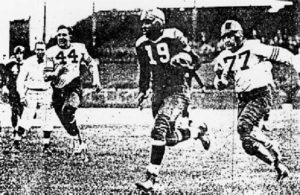 If he’d played in another era, Joe Lillard might be remembered today as one of the best athletes in the history of football. Growing up in the boomtown of Mason City, Iowa, he excelled in everything— football, basketball, baseball, track. At Oregon, he played and dominated two games as a freshman halfback before he lost eligibility when it was discovered he’d played baseball and basketball for semi-pro black teams. So in 1932, he went pro, and was signed by the Chicago Cardinals as the only black player in the NFL. For a year, he was used to rush, kick, return punts, and throw. In 1933, he was released. He and Ray Kemp share the honor of being the last black men to play in the NFL before an unofficial ban on African-Americans took hold. This “gentlemen’s agreement” lasted until 1946.
If he’d played in another era, Joe Lillard might be remembered today as one of the best athletes in the history of football. Growing up in the boomtown of Mason City, Iowa, he excelled in everything— football, basketball, baseball, track. At Oregon, he played and dominated two games as a freshman halfback before he lost eligibility when it was discovered he’d played baseball and basketball for semi-pro black teams. So in 1932, he went pro, and was signed by the Chicago Cardinals as the only black player in the NFL. For a year, he was used to rush, kick, return punts, and throw. In 1933, he was released. He and Ray Kemp share the honor of being the last black men to play in the NFL before an unofficial ban on African-Americans took hold. This “gentlemen’s agreement” lasted until 1946.
For a number of reasons, race relations between blacks and whites in the 1930s were more strained than they had been at any time since Reconstruction. Racial inequality and segregation were written into law, as ever, but when the Great Depression hit, many Americans, both white and black, lost everything. And many Americans, both white and black, were suddenly fighting for the same menial jobs.
Into this context burst Joe Lillard. He was special. He was electric. The Chicago Defender called him “easily the best halfback in football.” A Boston columnist wrote: “Lillard is not only the ace of the Cardinal backfield but he is one of the greatest all-around players that has ever displayed his wares on any gridiron in this section of the country.” (read more)
TIPHC Bookshelf
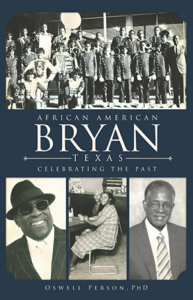 Published scholarship on black history in Texas is growing and we’d like to share with you some suggested readings, both current and past, from some of the preeminent history scholars in Texas and beyond. We invite you to take a look at our bookshelf page — including a featured selection — and check back as the list grows. A different selection will be featured each week. We welcome suggestions and reviews. This week, we offer, “African American Bryan, Texas: Celebrating the Past,” by Oswell Person, PhD. (2012)
Published scholarship on black history in Texas is growing and we’d like to share with you some suggested readings, both current and past, from some of the preeminent history scholars in Texas and beyond. We invite you to take a look at our bookshelf page — including a featured selection — and check back as the list grows. A different selection will be featured each week. We welcome suggestions and reviews. This week, we offer, “African American Bryan, Texas: Celebrating the Past,” by Oswell Person, PhD. (2012)
Bryan was incorporated in 1872, but it would take more than ten years before its African American population was offered schooling. Nothing would come easy for them, but they persevered through hard work, ingenuity and family support. The success of today’s generation is a direct result of determined, hardworking pioneers like Dr. Samuel J. Sealey Sr., Bryan’s baby doctor” in the 1930s and ’40s, and Dr. William A. Hammond Sr., who opened Bryan’s first black hospital and employed many blacks through his business ventures. Learn about the inspiration and guidance provided by the likes of Oliver Wayne Sadberry, an outstanding community leader and principal of Fairview and Washington Elementary. Dr. Oswell Person shares the story of this community’s achievements, successes and contributions in the face of incredible odds.”
This Week in Texas Black History, Apr. 23-29
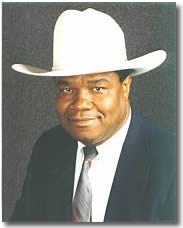 23 – On this date in 2004, Earl Pearson, then a 28-year veteran of the Texas Department of Public Safety, was named chief of the Texas Ranger Division. With his promotion, Pearson became the first black Senior Ranger Captain and the first black DPS division chief. Pearson grew up in Rotan.
23 – On this date in 2004, Earl Pearson, then a 28-year veteran of the Texas Department of Public Safety, was named chief of the Texas Ranger Division. With his promotion, Pearson became the first black Senior Ranger Captain and the first black DPS division chief. Pearson grew up in Rotan.
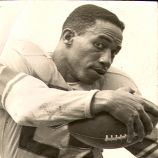 23 – On this day in 1928, black college football great Odie Posey was born in Austin. Posey, a running back, graduated from Phillis Wheatley High School in San Antonio and then attended Southern University in Baton Rouge, La. on a tennis scholarship. Posey teamed with Harold Jones in 1947 to capture the Prairie View Interscholastic League 2A Boys’ Double state championship title. At Southern, Posey became the best running back in school history. His 1,399-yards rushing total in 1949 led the nation (NCAA Division II) and still stands as the highest single-season mark in school history. During his four years at Southern, the Jaguars were 46-2-2 (undefeated, 12-0, in 1948), won three Black College National Championships, four Southwestern Athletic Conference titles and two bowl games, including the 1948 Fruit Bowl Championship against San Francisco State University. Posey was a four-time Pittsburgh Courier All-American and a four-year All-SWAC selection.
23 – On this day in 1928, black college football great Odie Posey was born in Austin. Posey, a running back, graduated from Phillis Wheatley High School in San Antonio and then attended Southern University in Baton Rouge, La. on a tennis scholarship. Posey teamed with Harold Jones in 1947 to capture the Prairie View Interscholastic League 2A Boys’ Double state championship title. At Southern, Posey became the best running back in school history. His 1,399-yards rushing total in 1949 led the nation (NCAA Division II) and still stands as the highest single-season mark in school history. During his four years at Southern, the Jaguars were 46-2-2 (undefeated, 12-0, in 1948), won three Black College National Championships, four Southwestern Athletic Conference titles and two bowl games, including the 1948 Fruit Bowl Championship against San Francisco State University. Posey was a four-time Pittsburgh Courier All-American and a four-year All-SWAC selection.
 24 – On this date in 1944, The United Negro College Fund was incorporated with 27 member schools (now 38). Mary Branch, president of Tillotson College in Austin, helps to establish the organization. The UNCF’s mission is to enhance the quality of education by raising operating funds for their member colleges and universities, providing financial support to deserving students, and increasing access to technology for students and faculty at Historically Black Colleges and Universities (HBCUs). Both The Non-Profit Times and The Chronicle of Philanthropy have ranked UNCF among the top 10 charitable educational organizations in the country.
24 – On this date in 1944, The United Negro College Fund was incorporated with 27 member schools (now 38). Mary Branch, president of Tillotson College in Austin, helps to establish the organization. The UNCF’s mission is to enhance the quality of education by raising operating funds for their member colleges and universities, providing financial support to deserving students, and increasing access to technology for students and faculty at Historically Black Colleges and Universities (HBCUs). Both The Non-Profit Times and The Chronicle of Philanthropy have ranked UNCF among the top 10 charitable educational organizations in the country.
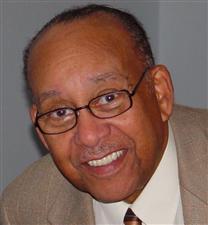 25 – Robert Leon Wormley, who opened the first black-owned insurance agency (Wormley-Mitchell & Associates) in Austin in 1954, died on this day at age 82 in 2010. A Minneapolis, Minn. native, Wormley was a Civil Rights activist who helped picket businesses that practiced segregation and worked to improve life for Austin’s black community. He worked on poverty issues for Govs. Preston Smith and John Connelly. Wormley was the first black member of the Independent Insurance Agents of Austin.
25 – Robert Leon Wormley, who opened the first black-owned insurance agency (Wormley-Mitchell & Associates) in Austin in 1954, died on this day at age 82 in 2010. A Minneapolis, Minn. native, Wormley was a Civil Rights activist who helped picket businesses that practiced segregation and worked to improve life for Austin’s black community. He worked on poverty issues for Govs. Preston Smith and John Connelly. Wormley was the first black member of the Independent Insurance Agents of Austin.
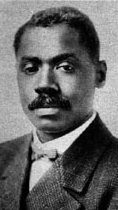 29 – This date marks the birth of physician J. Edward Perry in 1870 in Clarksville, Texas. Born to former slaves, Perry graduated from Bishop College in Marshall in 1891 then from Meharry Medical College in Nashville, Tenn. in 1895. On November 1, 1910 he founded the Perry Sanitarium and Training School for Nurses (and doctors) to tend black patients in Kansas City. The sanitarium was renamed Wheatley-Provident Hospital in 1915 and Dr. Perry served as its superintendent from 1910 until 1930. At age 76, Perry came out of retirement to serve as executive director of the Houston Negro Hospital in March 1947. Through his dedicated efforts, the hospital became accredited and affiliated with Baylor College of Medicine.
29 – This date marks the birth of physician J. Edward Perry in 1870 in Clarksville, Texas. Born to former slaves, Perry graduated from Bishop College in Marshall in 1891 then from Meharry Medical College in Nashville, Tenn. in 1895. On November 1, 1910 he founded the Perry Sanitarium and Training School for Nurses (and doctors) to tend black patients in Kansas City. The sanitarium was renamed Wheatley-Provident Hospital in 1915 and Dr. Perry served as its superintendent from 1910 until 1930. At age 76, Perry came out of retirement to serve as executive director of the Houston Negro Hospital in March 1947. Through his dedicated efforts, the hospital became accredited and affiliated with Baylor College of Medicine.
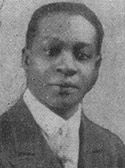 29 – In 1892, Carter W. Wesley, newspaperman and political activist, was born on this day in Houston. Wesley received a B.A. degree from Fisk University in Nashville in 1917, entered the Army and became one of the first black officers in the U.S. military. After serving in World War I, he earned a law degree from Northwestern University in Evanston, Illinois and in 1927 returned to Houston where he bought into a newly formed publishing company which owned the Houston Informer newspaper. In 1934, he became publisher and used the paper as a platform to battle racism and to speak on behalf African Americans. Wesley was also a founder of the National Newspaper Publishers Association, a federation of more than 200 black community newspapers across the United States.
29 – In 1892, Carter W. Wesley, newspaperman and political activist, was born on this day in Houston. Wesley received a B.A. degree from Fisk University in Nashville in 1917, entered the Army and became one of the first black officers in the U.S. military. After serving in World War I, he earned a law degree from Northwestern University in Evanston, Illinois and in 1927 returned to Houston where he bought into a newly formed publishing company which owned the Houston Informer newspaper. In 1934, he became publisher and used the paper as a platform to battle racism and to speak on behalf African Americans. Wesley was also a founder of the National Newspaper Publishers Association, a federation of more than 200 black community newspapers across the United States.
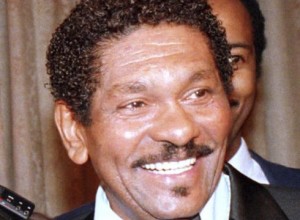 29 — Carl Edward Gardner, an original member of the 1950’s R&B/Rock and Roll group The Coasters, was born on this day in 1928 in Tyler. Gardner moved to Los Angeles in 1952 and sang with The Robins, a group that included Bobby Nunn, from 1954-1955. Gardner and Nunn left the Robins to help form the Coasters in the fall of 1955. Gardner led on such Coasters’ hits as ‘Poison Ivy,’ ‘Yakety Yak’ and ‘Charlie Brown.’ The group was inducted into the Rock and Roll Hall of Fame on January 21, 1987 as the first vocal group receiving that honor. The Coasters had six gold records (million sellers).
29 — Carl Edward Gardner, an original member of the 1950’s R&B/Rock and Roll group The Coasters, was born on this day in 1928 in Tyler. Gardner moved to Los Angeles in 1952 and sang with The Robins, a group that included Bobby Nunn, from 1954-1955. Gardner and Nunn left the Robins to help form the Coasters in the fall of 1955. Gardner led on such Coasters’ hits as ‘Poison Ivy,’ ‘Yakety Yak’ and ‘Charlie Brown.’ The group was inducted into the Rock and Roll Hall of Fame on January 21, 1987 as the first vocal group receiving that honor. The Coasters had six gold records (million sellers).
Blog: Ron Goodwin, Ph.D., author, PVAMU history professor
 Ron Goodwin’s bi-weekly blog appears exclusively for TIPHC. Goodwin is a San Antonio native and Air Force veteran. Generally, his column addresses contemporary issues in the black community and how they relate to black history. He and the TIPHC staff welcome your comments.
Ron Goodwin’s bi-weekly blog appears exclusively for TIPHC. Goodwin is a San Antonio native and Air Force veteran. Generally, his column addresses contemporary issues in the black community and how they relate to black history. He and the TIPHC staff welcome your comments.
Read his latest entry, “100 days,” here.
Submissions Wanted
Historians, scholars, students, lend us your…writings. Help us produce the most comprehensive documentation ever undertaken for the African American experience in Texas. We encourage you to contribute items about people, places, events, issues, politics/legislation, sports, entertainment, religion, etc., as general entries or essays. Our documentation is wide-ranging and diverse, and you may research and write about the subject of your interest or, to start, please consult our list of suggested biographical entries and see submission guidelines. However, all topics must be approved by TIPHC editors before beginning your research/writing.
We welcome your questions or comments via email or telephone – mdhurd@pvamu.edu.

